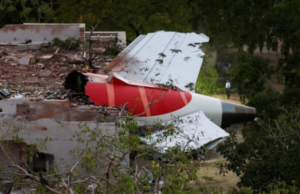NEW DELHI/WASHINGTON — Families of four victims from the Air India Flight 171 disaster have filed a lawsuit in the United States against Boeing and Honeywell, accusing the companies of negligence in the design and safety of the aircraft’s fuel control switches.
The lawsuit was filed last week in Delaware Superior Court and alleges that the faulty placement and design of the switches on the Boeing 787 Dreamliner caused the plane’s engines to lose thrust seconds after takeoff from Ahmedabad in June. The aircraft, bound for London Gatwick, crashed shortly afterward, killing 260 people, including 229 passengers, 12 crew members, and 19 people on the ground. Only one person survived.
Allegations of Defective Design
According to the complaint, the switches controlling fuel flow were located behind the thrust levers, making them prone to being moved inadvertently. India’s Aircraft Accident Investigation Bureau (AAIB) preliminary report confirmed that both engine switches were moved from “RUN” to “CUTOFF” during takeoff, cutting off fuel supply. Although they were switched back to “RUN” within seconds, investigators said the aircraft had already lost sufficient thrust to remain airborne.
The lawsuit claims that both Boeing and Honeywell, which developed and supplied the components, were aware of the risks but “did nothing” to correct them. Lawyers for the families cited a 2018 Federal Aviation Administration (FAA) advisory, which urged operators to inspect the locking mechanism of the fuel switches but did not make the recommendation mandatory.
Company and Regulator Responses
The FAA has previously stated that Boeing aircraft fuel switches are safe. Boeing declined to comment directly on the lawsuit, referring instead to the AAIB’s ongoing investigation. Honeywell has not yet issued a public statement.
Air India, which inspected its 787 fleet after the crash, said it found no issues with the fuel control switches and that throttle modules had been replaced in 2019 and 2023 on the aircraft involved in the accident. Aviation experts have also raised doubts over whether the switches alone could have caused the crash, pointing to the possibility of cockpit error.
Families Seek Accountability
The lawsuit represents the families of Kantaben Dhirubhai Paghadal, Naavya Chirag Paghadal, Kuberbhai Patel, and Babiben Patel. They are being represented by the Lanier Law Firm in Texas.
“Boeing and Honeywell sat idly behind a gentle advisory that merely recommended inspections,” the lawsuit states. The families allege the companies failed to warn airlines of the dangers, failed to supply replacement parts, and knowingly allowed a defect to persist.
Next Steps in the Investigation
The case, titled Paghadal, et al. v. The Boeing Company and Honeywell International, is expected to be closely watched in both the U.S. and India. The AAIB has said a final report is due in 2026, which will provide a full account of the causes of the crash.
Until then, the lawsuit highlights continuing concerns about aircraft safety, regulatory oversight, and whether voluntary advisories are sufficient to address design flaws that can have catastrophic consequences. (zai)

